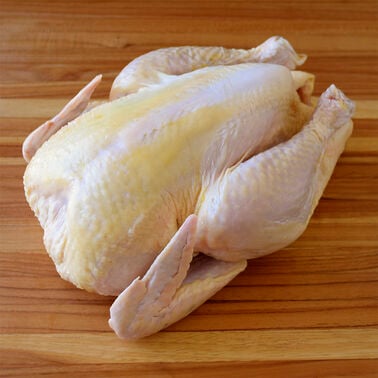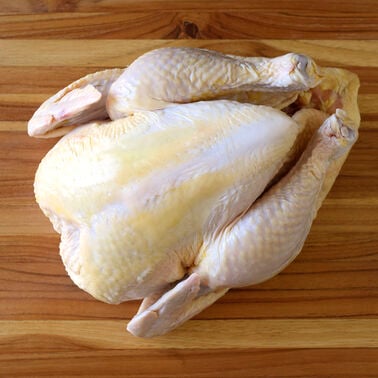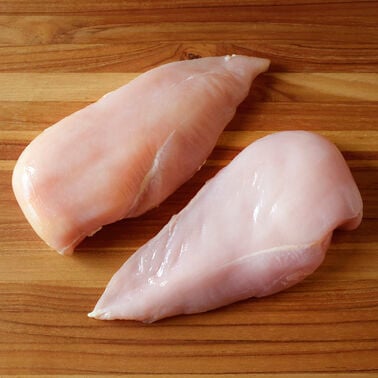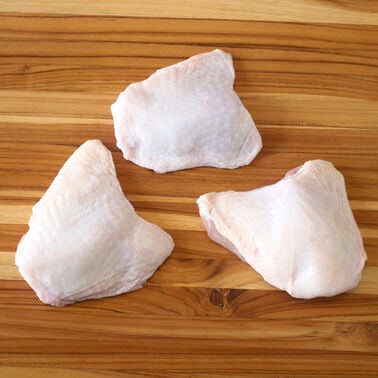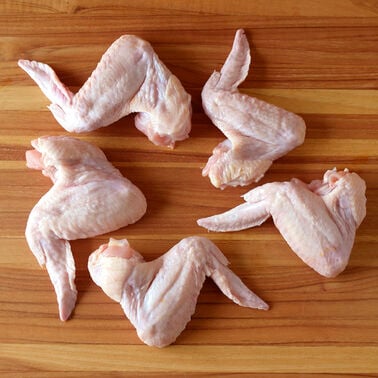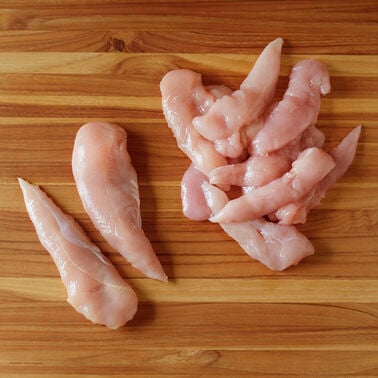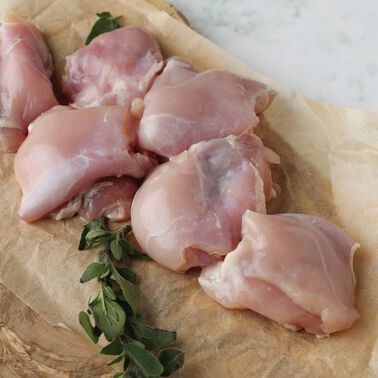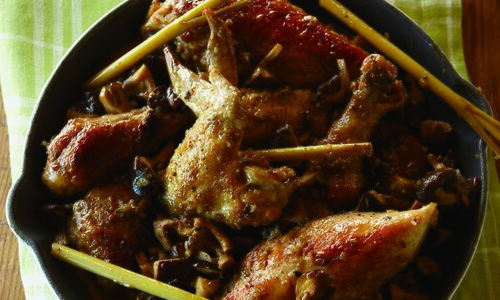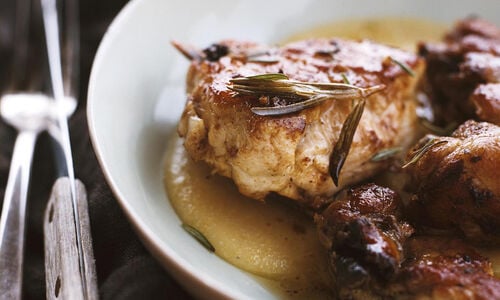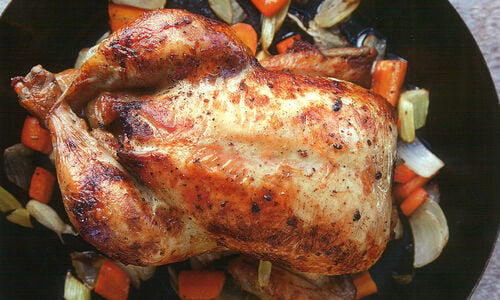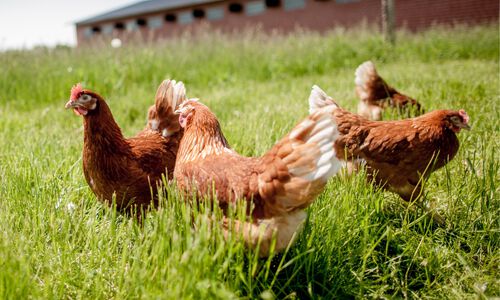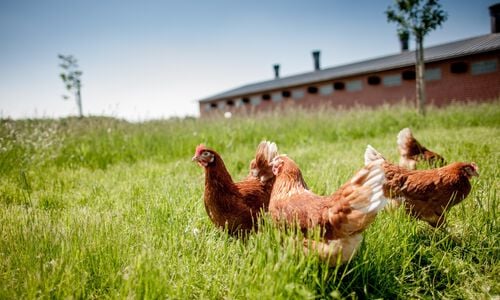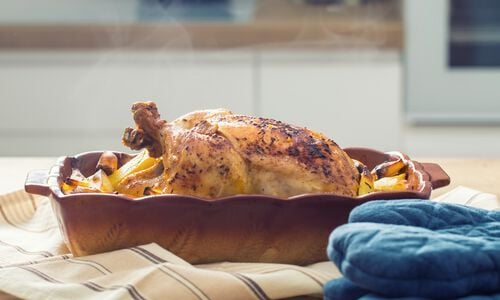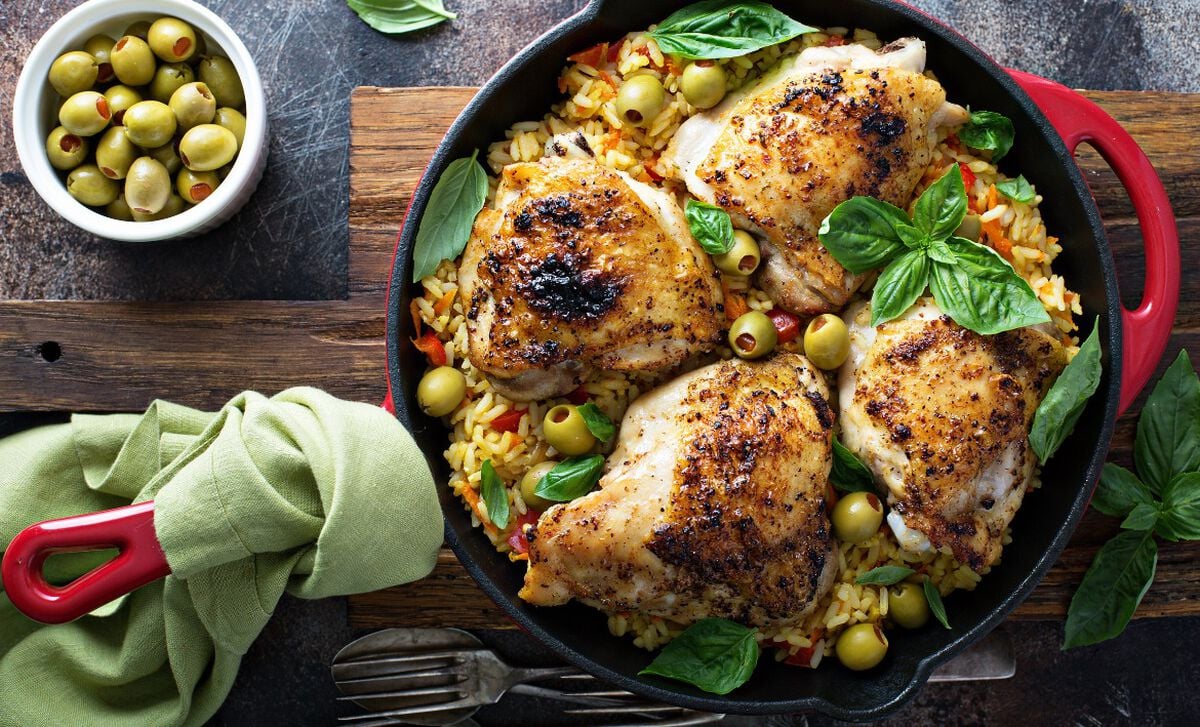
Since the mid-1990s the USDA has required that the temperature of a chicken carcass be lowered to at least 40 degrees within four hours of slaughter. Most processors cool chickens in vats of ice-cold water, a technique that does the trick, but allows the chicken carcass to absorb water—mostly in the skin. Studies have shown that water-chilled chicken absorbs anywhere from 2 to 12 percent of its weight in water on average. While it might superficially appear that added moisture would be a good thing in a chicken, in fact, it dilutes the flesh and flavor, makes it soggy, and prevents the skin from crisping when roasted. There is also an increased risk of cross-contamination since many chickens are dunked in the same water.
In the air-chilling process, chickens are suspended separately from a track that moves through several chambers. In the first, cold purified air is run over each bird, which quickly reduces its body temperature. Then, depending on the system used, the chickens will cycle through one or two more chilled chambers for up to 3 ½ hours. The air-chilling process takes longer than the water bath, but many feel the results are worth the time.
Why Air Chill Chicken?
According to many chefs and even food scientist Harold McGee, air-chilled chickens just taste better. The natural juices are not diluted, so the meat is more tender and flavorful. When you buy water-chilled chicken, you are paying for water—on average 8% of its body weight. But with air-chilled chicken, all you pay for is chicken. There is very little loss of weight from slaughter to market, and there is no purge—that red/pink watery liquid you often find in packages of chicken. Because they have not absorbed excess water, they also cook faster than a conventionally chilled chicken. And perhaps the best argument for air chilling is the crispy skin. You can achieve photo-perfect roasted chicken, with glorious crusty skin that is just not possible with a water-chilled chicken.
Good for the Environment
There are also environmental benefits. Air chill processing has much lower water usage, which saves tens of thousands of gallons per day. USDA researchers estimate that processors could save about 4.5 billion gallons of water a year if all nine billion birds processed annually in the U.S. were air chilled. However, air chilling takes longer than immersion chilling so more energy is expended on air chilling.
Over the last few years, consumers have become more conscientious about how chickens are raised. Labels boast of free-range, organic, and natural chickens. While it’s important to consider farming practices, thoughtful consumers should not stop there. The processing clearly impacts the quality of the final product as well. So as long as Americans keep eating an average of 80 pounds of chicken per year, we might as well eat the tastier option: air-chilled chicken.
